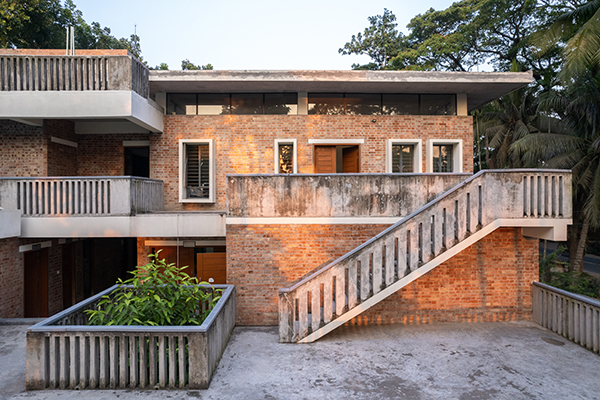-
Date
Wednesday, October 18 2023-Tuesday, January 09 2024
-
Time
Multi-day event.
-
Location
Architecture as Freedom features the design of five regional offices across rural Bangladesh constructed for BRAC, the world’s largest non-governmental development organization.
A broader philosophical motivation undergirded the design: How do we create buildings that offer its primary clients—poor rural communities who come to BRAC offices to receive different services—an experience of hope and freedom? These projects highlight architecture’s ability to play transformative roles in spatializing freedom by ensuring people’s unobstructed accessibility and movement, thermal and social comfort, and by creating spaces where their ability to co-design development solutions is enhanced.
About BRAC
The Bangladesh Rural Advancement Committee (BRAC) was founded in 1972. This organization seeks to create a “world free from all forms of exploitation and discrimination where everyone has the opportunity to realize their potential.” This globally known organization works in 11 countries, including Bangladesh, to eliminate extreme poverty and empower people with financial mobility and capacity building.
Acknowledgments
Architecture as Freedom is organized by The Catholic University of America School of Architecture and Planning with the Centre for Inclusive Architecture and Urbanism (Ci+AU) at BRAC University in cooperation with the District Architecture Center for the SIGAL Gallery.
Curator: Adnan Z Morshed, PhD
Co-curators: Md. Faysal Kabir and S.M. Shafaiet Mahmud
Research Assistants: Esrat Jahan Onty, Adnan Sakib, Juliana Dimeglio, Brad Tigges, Tawsif Munawar, and Sadia Ishtiaque, Juliana Keagle, MaryJane Hughes, Melissa Kazanci, Noshin Tasfia Proma, Matthew Zernis, Juan Soto, Braden Gilmore
Photo Credit
Roofscape, BRAC office, Jhikargacha, Jashore / Photo © Asif Salman

